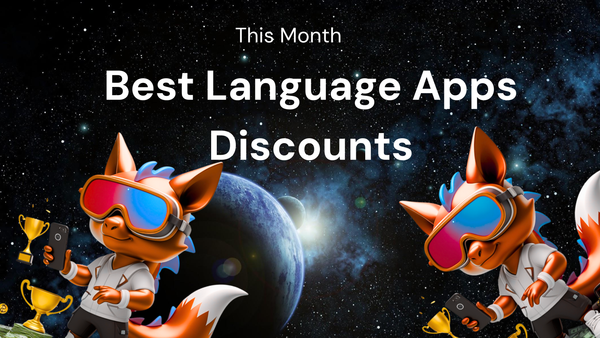Pricing Breakdown Every Shopper Should Know for AI tools deals

Pricing Breakdown Every Shopper Should Know for AI Tools Deals
Artificial intelligence (AI) is rapidly transforming industries, and with it, the demand for AI-powered tools is surging. From automating tasks and enhancing productivity to providing data-driven insights and improving decision-making, AI tools offer a compelling value proposition for businesses and individuals alike. However, navigating the world of AI tool pricing can be complex and confusing. This article aims to demystify the pricing models and factors that influence the cost of AI tools, empowering you to make informed decisions and find the best deals for your needs. We are not recruiters, sellers, or service providers; our goal is solely to provide clear, accurate, and practical information to help you understand the AI tool landscape.
Understanding the Landscape of AI Tools
Before diving into pricing, it's crucial to understand the broad spectrum of AI tools available. These tools can be categorized in various ways, including:
- Functionality: AI tools can perform diverse tasks such as natural language processing (NLP), machine learning (ML), computer vision, robotic process automation (RPA), and more.
- Industry: Specific AI tools are tailored for industries like healthcare, finance, marketing, manufacturing, and retail, addressing unique challenges and needs.
- Deployment: AI tools can be deployed on-premise (installed on your own servers), in the cloud (accessed through a web browser), or as a hybrid solution (a combination of both).
- Target Audience: Some AI tools are designed for large enterprises, while others cater to small businesses or individual users.
This diversity means that pricing models vary significantly. Understanding the type of AI tool you need and its intended use case is the first step in evaluating its cost.
Common AI Tool Pricing Models
AI tools employ a variety of pricing models, each with its own advantages and disadvantages. Here's a breakdown of the most common models:
- Subscription-Based Pricing: This is arguably the most prevalent model, particularly for cloud-based AI tools. Users pay a recurring fee (monthly or annually) for access to the tool and its features. Subscription tiers often vary based on usage limits, features included, and the number of users.
- Pros: Predictable costs, access to ongoing updates and support, scalability.
- Cons: Can be expensive in the long run, potential for underutilization if usage is low, reliance on vendor for continued access.
- What to look for: Explore tiered pricing plans carefully. Analyze your expected usage (e.g., number of API calls, data storage requirements, number of users) and select the plan that aligns with your needs. Pay attention to overage charges and upgrade policies.
- Usage-Based Pricing (Pay-as-you-go): This model charges users based on their actual consumption of the tool's resources. For example, you might pay per API call, per document processed, or per hour of compute time used. This is common for AI tools that are integrated into existing applications or used for specific, occasional tasks.
- Pros: Cost-effective for infrequent use, allows for precise control over spending, avoids paying for unused features.
- Cons: Unpredictable costs if usage fluctuates, requires careful monitoring of consumption, potential for unexpected bills.
- What to look for: Thoroughly understand the unit of measurement used for billing (e.g., API calls, data processed). Estimate your expected usage and calculate the potential cost. Look for tools that offer usage dashboards and alerts to help you track your consumption.
- Per-User Pricing: This model charges a fixed fee per user per month or year. It's common for collaborative AI tools used by teams or organizations.
- Pros: Simple to understand and budget for, easy to scale up or down as your team size changes.
- Cons: Can be expensive for large teams, may not be cost-effective if some users are infrequent users.
- What to look for: Consider whether all users need access to all features. Some tools offer different user roles with varying levels of access and pricing. Negotiate volume discounts for larger teams.
- One-Time License Fee: This model involves paying a single upfront fee for a perpetual license to use the AI tool. It's more common for on-premise software solutions.
- Pros: Potentially lower long-term cost compared to subscription models, greater control over the software.
- Cons: High upfront investment, requires managing your own infrastructure and updates, may not include ongoing support.
- What to look for: Carefully evaluate the total cost of ownership, including hardware, maintenance, and support. Understand the licensing terms and conditions, including the number of users allowed and any restrictions on usage.
- Freemium Model: This model offers a basic version of the AI tool for free, with limited features or usage. Users can upgrade to a paid plan to unlock additional functionality and remove limitations.
- Pros: Allows you to try out the tool before committing to a paid plan, provides a low-cost entry point.
- Cons: Limited functionality in the free version may not meet your needs, may contain ads or other restrictions.
- What to look for: Thoroughly test the free version to ensure it meets your basic requirements. Understand the limitations of the free version and the benefits of upgrading to a paid plan.
- Open Source: Some AI tools are open source, meaning that the source code is freely available and can be modified and distributed. While the software itself may be free, you may still need to pay for support, hosting, or customization services.
- Pros: Highly customizable, potentially lower cost, access to a large community of developers.
- Cons: Requires technical expertise to set up and maintain, may lack formal support, potential security vulnerabilities.
- What to look for: Evaluate your technical capabilities and consider whether you have the resources to manage an open-source AI tool. Look for reputable open-source projects with active communities and robust documentation.
Factors Influencing the Cost of AI Tools
Several factors influence the pricing of AI tools, and understanding these factors can help you negotiate better deals and choose the most cost-effective solution.
- Complexity of the AI Model: More sophisticated AI models that require more data and computational power tend to be more expensive. For example, a deep learning model for image recognition will likely cost more than a simpler rule-based system.
- Data Requirements: The amount and quality of data required to train and use the AI tool can significantly impact the cost. Some tools may require you to provide your own data, while others include pre-trained models or offer data enrichment services at an additional cost.
- Computational Resources: AI tools often require significant computational resources, such as GPUs (Graphics Processing Units) and CPUs (Central Processing Units). The cost of these resources can be a major factor in the overall price, especially for cloud-based solutions.
- Features and Functionality: The more features and functionality an AI tool offers, the higher its price is likely to be. Consider whether you need all the features included in a particular plan or if you can get by with a more basic version.
- Support and Training: The level of support and training offered by the vendor can also affect the price. Some vendors offer premium support packages with dedicated account managers and faster response times, while others only provide basic documentation and community forums.
- Vendor Reputation and Brand: Established vendors with a strong reputation and brand often charge higher prices than lesser-known competitors. However, they may also offer better reliability, security, and support.
- Market Demand: The demand for a particular AI tool or technology can also influence its price. If there is high demand and limited supply, prices are likely to be higher.
- Contract Length: Vendors often offer discounts for longer-term contracts. If you are confident that you will continue to use the AI tool for an extended period, signing a longer-term contract can save you money.
- Negotiation: Don't be afraid to negotiate with vendors, especially if you are a large customer or if you are considering multiple solutions. You may be able to negotiate a lower price, additional features, or better support.
Finding the Best Deals on AI Tools
With so many AI tools available, finding the best deals requires research, comparison, and negotiation. Here are some tips to help you find the most cost-effective solutions:
- Define Your Requirements: Clearly define your needs and requirements before you start shopping for AI tools. What problems are you trying to solve? What features do you need? What is your budget?
- Research and Compare: Research different AI tools that meet your requirements and compare their features, pricing, and support. Use online reviews, industry reports, and vendor websites to gather information.
- Take Advantage of Free Trials: Many AI tool vendors offer free trials. Take advantage of these trials to test out the tools and see if they meet your needs before committing to a paid plan.
- Look for Discounts and Promotions: Vendors often offer discounts and promotions, especially for new customers or during specific times of the year. Sign up for email newsletters and follow vendors on social media to stay informed about these deals.
- Consider Open Source Alternatives: If you have the technical expertise, consider using open-source AI tools. These tools can be a cost-effective alternative to commercial solutions.
- Read the Fine Print: Carefully read the terms and conditions of any AI tool before signing up. Pay attention to usage limits, overage charges, cancellation policies, and data privacy policies.
- Negotiate with Vendors: Don't be afraid to negotiate with vendors. You may be able to negotiate a lower price, additional features, or better support.
- Explore Bundled Solutions: Some vendors offer bundled solutions that include multiple AI tools or services at a discounted price. This can be a cost-effective way to access a wider range of AI capabilities.
- Seek Recommendations: Ask for recommendations from your colleagues, industry peers, or consultants. They may have experience with AI tools that you are considering and can provide valuable insights.
- Monitor Your Usage: Once you have chosen an AI tool, monitor your usage to ensure that you are not overspending. Use the vendor's usage dashboards and alerts to track your consumption and identify areas where you can optimize your spending.
Examples of AI Tool Pricing Structures
To further illustrate the different pricing models, here are some examples of how specific AI tools are priced:
- OpenAI API (GPT-3, DALL-E 2): Usage-based pricing. Users pay per token (a unit of text) generated or per image created. The price varies depending on the specific model used. They also offer pre-purchased credit options.
- Google Cloud AI Platform: Usage-based pricing. Users pay for the compute resources used to train and deploy their AI models. Pricing depends on the type of machine, the length of the training job, and the amount of data processed.
- Microsoft Azure AI Services: A mix of subscription and usage-based pricing. Some services, like Azure Cognitive Services, offer tiered pricing plans with different levels of usage limits. Others, like Azure Machine Learning, are priced based on compute resources used.
- DataRobot: Subscription-based pricing. Offers various subscription plans with different features and levels of support. Pricing is typically customized based on the customer's needs and usage.
- HubSpot AI-Powered Tools: Per-user, per-month pricing, typically as part of a larger HubSpot marketing or sales package. The AI features are often bundled into higher-tier plans.
These examples demonstrate the wide range of pricing models available in the AI tool market. It is important to carefully evaluate your needs and budget before choosing an AI tool and to compare the pricing of different options.
Potential Hidden Costs to Consider
While the advertised price of an AI tool is important, it's crucial to consider potential hidden costs that can significantly impact your overall expenses. These hidden costs might include:
- Data Preparation and Cleaning: AI models require clean and well-structured data. If your data is messy or incomplete, you may need to invest in data preparation and cleaning services, which can be expensive.
- Integration Costs: Integrating an AI tool with your existing systems can require significant effort and resources. You may need to hire consultants or developers to help you with the integration process.
- Training and Onboarding: Training your employees on how to use the AI tool effectively can take time and resources. You may need to invest in training courses or workshops.
- Maintenance and Support: Maintaining and supporting an AI tool can require ongoing effort and resources. You may need to pay for software updates, bug fixes, and technical support.
- Infrastructure Costs: If you are deploying the AI tool on-premise, you will need to invest in hardware, software, and infrastructure to support it.
- Data Storage Costs: Storing the data required to train and use the AI tool can be expensive, especially if you are dealing with large volumes of data.
- Security Costs: Protecting your AI tool and its data from security threats can require significant investment. You may need to implement security measures such as firewalls, intrusion detection systems, and data encryption.
- Compliance Costs: Complying with regulations such as GDPR (General Data Protection Regulation) and HIPAA (Health Insurance Portability and Accountability Act) can require significant effort and resources.
By carefully considering these potential hidden costs, you can get a more accurate estimate of the total cost of ownership for an AI tool.
Conclusion: Making Informed Decisions in the AI Tool Market
The world of AI tools is vast and ever-evolving, and understanding the different pricing models and factors that influence cost is essential for making informed decisions. By following the tips and guidelines outlined in this article, you can navigate the AI tool market with confidence and find the best deals for your needs. Remember to carefully define your requirements, research different options, take advantage of free trials, negotiate with vendors, and monitor your usage to ensure that you are getting the most value for your money. While we are not recruiters, sellers, or service providers, we hope this information empowers you to confidently explore the potential of AI tools for your business or personal use.




